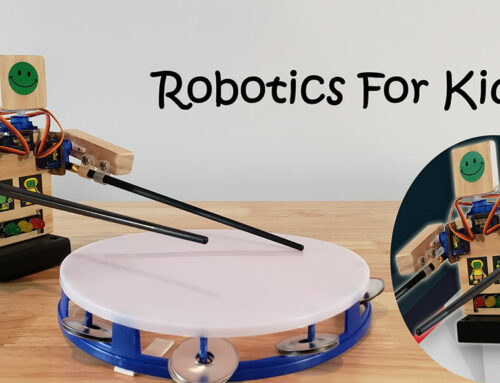By Peggy Ployhar
The THSC Special Needs Department occasionally gets a call from a parent saying, “I can’t get my special needs child to sit still. How can we can get any work done if my child can’t sit long enough to complete an assignment?”
Although there are many variables involved in answering this question, the biggest hurdle I encounter is trying to help this parent realize that sitting still does not mean learning is happening. Additionally, quiet desk work does not mean the best learning method is being delivered.
In fact, learning and movement go hand in hand. Many new studies decisively show that lack of movement actually decreases overall brain function, thus increasing the overall time a child needs to process new data.
The science behind how movement affects learning has to do with the delivery of two very important chemicals to the brain, which stimulate faster thinking.
In an active child, oxygen and glucose are constantly being delivered to the brain. However, when a child sits, it takes less than 10 minutes for those resources to be pulled away from the brain and for learning to slow down and a sleepy state to set in.
Unfortunately, most research done on the connection between learning and movement is done on test subjects who are typical learners—not children with special needs.
What Does Research Show About How Learning Should Occur?
Eric Jensen, cofounder of SuperCamp, the nation’s first brain-compatible learning program, states in his book Teaching with the Brain in Mind that movement in a special needs educational setting can be a game-changer. Why? It helps students get past learning barriers that the traditional “sit in your seat and learn” type of teaching exasperates.
Jensen states: “Many teachers have found that programs that include movement help learners with special needs. Several hypotheses may explain this phenomenon. Many special-needs learners are stuck in counterproductive mental states, and movement is a quick way to change them.
“Second, movements, such as those involved in playing active games, will activate the brain across a wide variety of areas. It may be the stimulation of those neural networks that helps trigger some learning. For other students, it may be the rise in energy, the increased blood flow, and the amines that put them in a better mood to think and recall. Some routines that call for slower movement can do the reverse, calming down students who are overactive, hence supporting a state of concentration.”
Sharing Jensen’s findings usually helps a questioning parent accept that movement and learning should be added to the child’s homeschool curriculum. But, this question always follows: “How do I teach my special needs child while they are moving?”
13 Tips for a Special Needs Child to Continue Learning
- Do flashcards while pacing the floor.
- Put math facts on sheets of paper at your student’s hand height up a flight of stairs. Have the child touch the sheets one at a time while repeating the information.
- Go beyond sitting and listening to songs that teach educational facts.
- Make up movements to go along with songs.
- Practice storytelling while on walks. One person thinks of three things to be included in the story and another person makes up the story and tells it to the others walking with them.
- Buy washable window markers and have your students do their writing on the window while standing. Or, add a large blackboard to you classroom.
- Do longer read-out louds while your children are eating lunch or folding clothes.
- Create a hopscotch grid that your students can use to “jump out” their spelling words.
- Practice sight words by putting them on a wall, then have your child read them after shooting them with a Nerf gun.
- Have your student skip count while jumping on a mini trampoline.
- Graph math equations on the driveway with chalk.
- Instead of doing matching activities with pen and paper, write out the items to be matched on post-it notes and have your student tape yarn to connect the matching items.
- Have an older child practice writing skills by creating a scavenger hunt with handwritten clues that need to be written clearly and concisely for the hunter to understand and follow.
Although it would be nice to adapt all learning activities to include movement, I realize it is not always possible. Thus, my final bit of advice is to urge parents to alternate their students’ seated learning time with active learning and to limit the seated activities to 10-minute chunks.
I also tell parents that over time their students may learn to increase seated learning time. If not, the practice of switching from inactive to active learning is a good coping skill into adulthood.
If you have questions about how to homeschool your struggling learner or special needs child, check out the Special Needs section of the THSC website.
This article originally appeared in Review magazine edition 20.3 from August 2016. Read the digital edition at THSC.org.
Peggy Ployhar, TTHSC Lead Writer and SPED Homeschool Founder & CEO
Peggy Ployhar, SPED Homeschool Founder & CEO, is a leader in the special education homeschooling community and a frequent writer and speaker on special education homeschooling issues. Peggy’s journey into homeschooling started 18 years ago when her oldest child was diagnosed with Asperger Syndrome.
Peggy is the former THSC (Texas Home School Coalition) Special Needs Team Lead, MACHE (Minnesota Association of Christian Home Educators) Special Needs Coordinator and MOPS (Mothers of Preschoolers) Area Coordinator for MN, ND and SD. She is certified by the American Association of Christian Counselors and trained as a Precept Bible Study leader.
In her free time Peggy enjoys aerial silks, paddle boarding, cooking, hiking and reading.
You can tune in every Tuesday evening on the SPED Homeschool Facebook page to watch Peggy host SPED Homeschool Conversations, a weekly talk show about special education homeschooling or you can join her daily on her personal YouTube channel, Daily Revelations.




